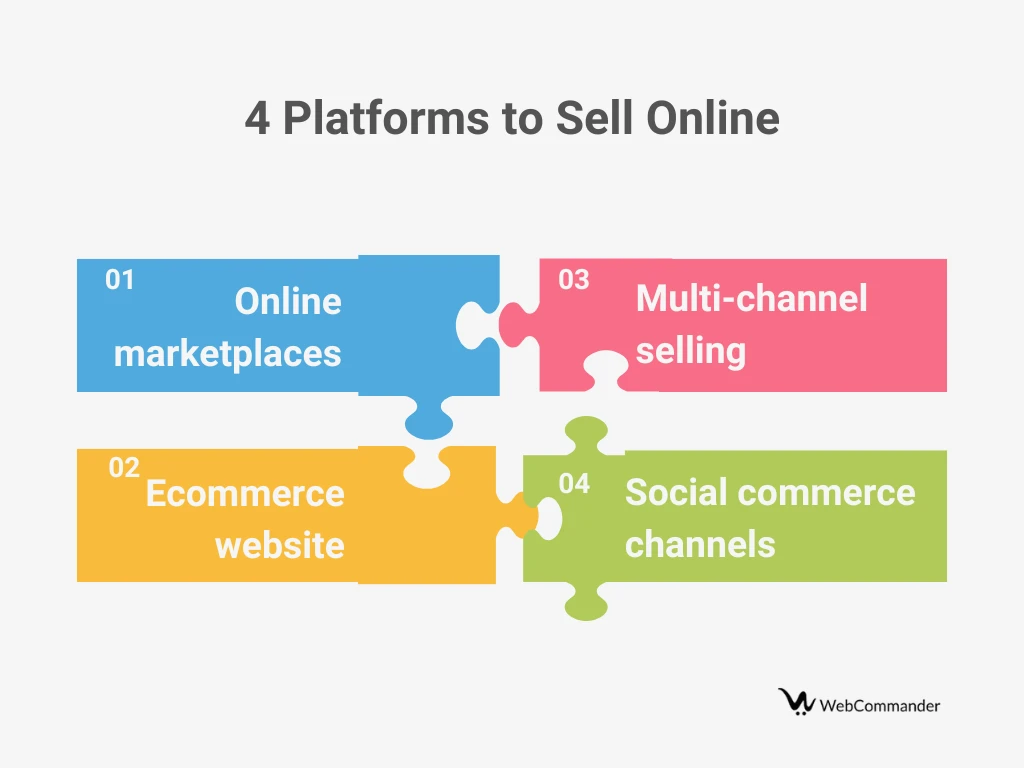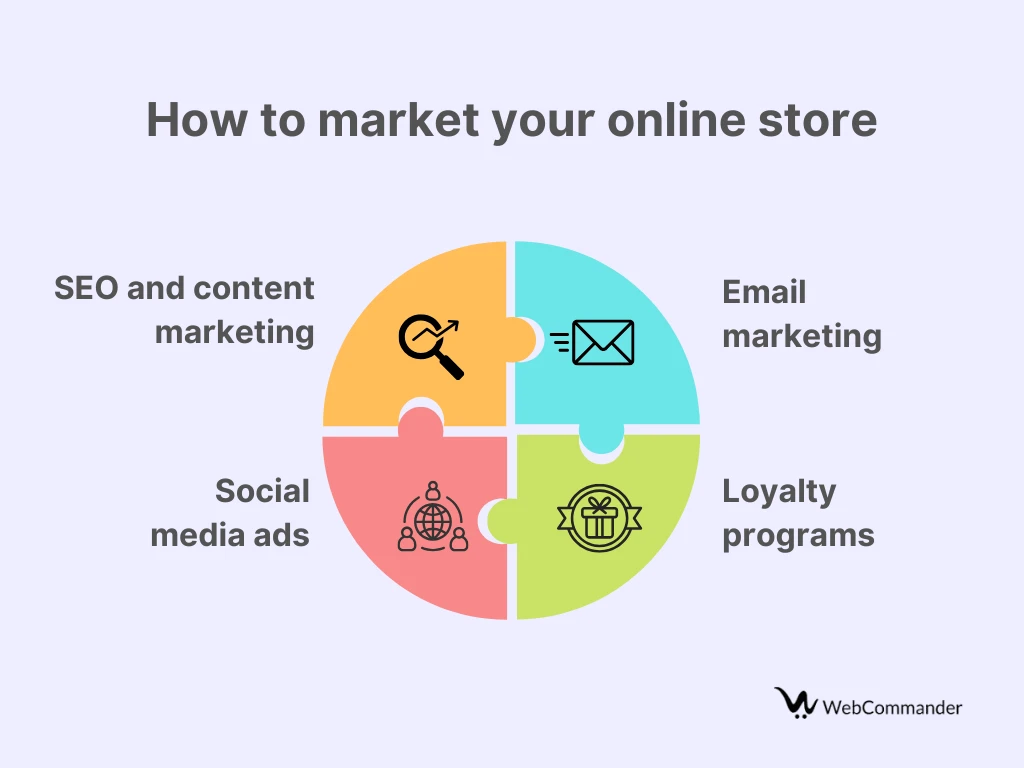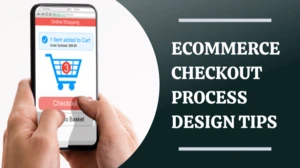The Guide to Selling Online: What You Need to Know
Whether you are a local artist wanting to sell your handcrafted decorative items or a fashion enthusiast launching your own clothing line, if your goal is to reach more customers and grow a business, selling online is not just an option. With too many platforms, products, and strategies out there, you might get overwhelmed even before you begin.
In this guide, we will walk you through the essentials, where to sell, what to sell, how to market, and more. This will help you to start strong and grow with more confidence.
Let's see what it really takes to start selling online.
What to sell: pick the right products
This is one of the most important steps to build a successful online store. Here are some steps you can follow to make smart choices from the very beginning.
1. Choose a niche you are interested in
Focus on the niche that actually interests you. Do not try to appeal to everyone. This will help you to get a clear direction while helping you build a loyal customer base. When you are personally interested in the niche, you will stay motivated, and you will have more insights into customer behaviour and trends.
2. Decide the product types
Once you are sure about the niche you will work for, decide the types of products you will sell. Suppose you want to work with physical products; choose whether it is clothing, electronics, or accessories. If you are interested in selling digital products, it can be anything from eBooks to online courses to design templates.
3. Validate your business idea
Before you end up investing time and money, you have to be sure whether there is real demand for your product. If you validate your idea prior, you can easily avoid launching products no one is interested in buying. There are several ways you can do it.
You can use Google Trends to track your interest. Also, you can browse platforms such as Amazon, eBay, or Etsy to analyse popular products and customer reviews.
4. Discover the target audience
You need to define your target audience to create better products. You can consider key demographics such as age, gender, location, and income to understand the interests. When you study the people, you can understand their problems and needs and provide real value to them.
Where to sell: choose the right platform
Selecting the right platform to sell is as important as picking the products themselves.
Here are four popular options to sell online.

1. Online marketplaces
Online marketplaces are popular as they give instant access to businesses to a massive audience. On platforms like Amazon, eBay, or Etsy, there are already millions of users who are searching for products. So, you don't have to think of driving higher traffic from the beginning. But, yes, as there are many sellers who are competing on these platforms, it gets hard to stand out.
2. Ecommerce website
This is one of the most popular options. When you create your own ecommerce website, you get full control over your brand, pricing, and customer experience. You can share your story, showcase images of your products, highlight customer reviews, run loyalty programs, and more. Moreover, you can handle everything from pricing and promotions to customer service to fulfilment using just one platform.
3. Multi-channel selling
Many businesses prefer multi-selling as it allows them to offer products through several platforms at the same time. This eventually benefits the businesses by reaching a wider audience as not all the customers shop in the same place. Also, customers enjoy the flexibility to engage with your products on the platform that they find most convenient.
4. Social commerce channels
Selling via social media platforms like Instagram, Facebook, or TikTok is another popular way to reach customers. Using any social channels, businesses can showcase their products through reels, posts, live videos, and influencer partnerships while building a community around the brand and interacting with the customers in a personal way.
How to ship: choose the right shipping methods
Shipping plays a key role when it comes to selling online. After all, faster and more affordable delivery can lead to repeat customers and positive reviews.
1. Understand the shipping options
It is a must to understand the various shipping methods that are available to you. From standard shipping to express shipping to flat rate shipping to local pickup or delivery, there are many shipping methods. Consider the product size, weight, and value when choosing shipping methods.
2. Focus on packaging and presentation
The packaging does more than protect your product; rather, it represents your brand. With good packaging, you can easily turn the regular purchase of your customers into a memorable experience. Make sure it is practical, well-designed, and eco-friendly.
3. Automate the process
You must set automation to manage orders and shipping. Otherwise, handling the shipping manually can be time-consuming and prone to mistakes. Setting automation, you can pull all your orders into a single dashboard while comparing real-time shipping rates.
How to market your online store

1. SEO and content marketing
When you are selling online, simply launching a website will not be enough. You need to find people, make them trust you, and buy from you. With SEO, you will get free long-term traffic by attracting people who are actually ready to buy.
Moreover, you can boost your store's visibility. Content marketing can also help you in selling. When you create helpful content like how-to-articles, buying guides, or product comparisons, they automatically build trust and authority.
2. Social media ads
You can simply run ads on platforms such as Facebook, Instagram, TikTok, or Pinterest to target audiences based on age, interests, demographics, and other behaviours. These are powerful for promotions as you can show the product's images and videos in action. Even if you are running limited-time offers or new products, you can run paid ads to promote new products.
3. Email marketing
This is one of the cost-effective methods to market your online selling products. Simply, you can use the email addresses of your customers to build a direct line and send emails, including welcome emails, abandoned cart reminders, product promotions, educational content, and more.
4. Loyalty programs
You can use this to reward your returning customers while encouraging them to purchase more often. With a well-designed loyalty program, you can easily build emotional connections and turn one-time buyers into returning buyers.
Final words
Overall, all you need is the right strategy and guidance to start selling online. Just pick the right products, select the best platforms, streamline the shipping process, and promote your store through the right marketing method; you will be ready to go. Start your online journey by showing up, standing out, and selling with confidence.




![How to Start an Ecommerce Business in Australia [2023 Guide]](/template/5731a701/images/resource-blog-right-img1.png)





